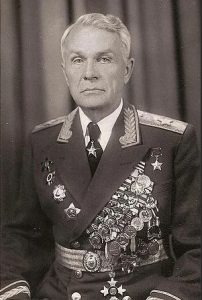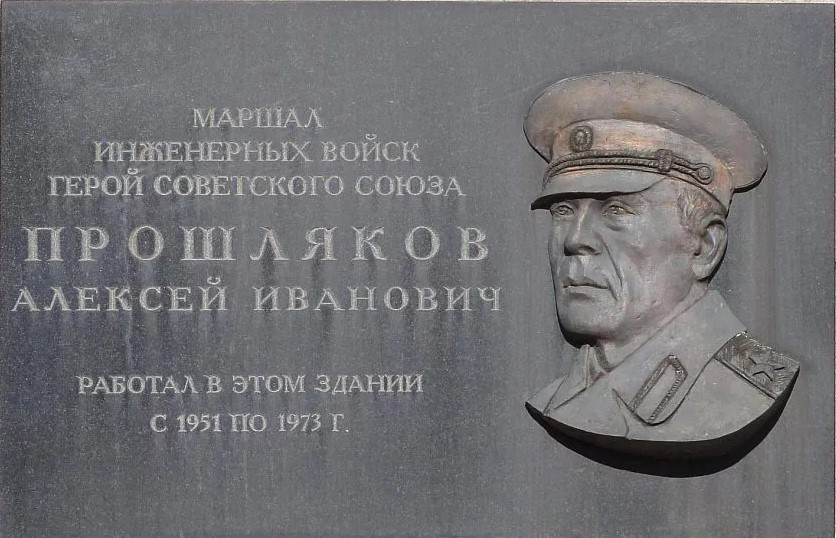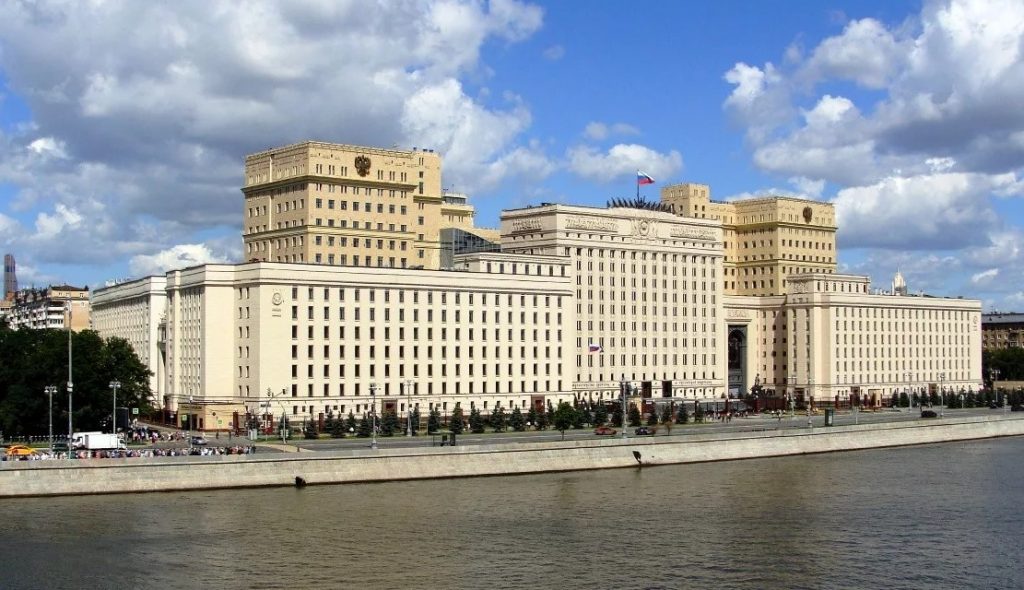Alexey Ivanovich
Proshlyakov
1901-1973

Alexey Ivanovich Proshlyakov was the head of the engineering troops of the 1st Belorussian Front, Colonel-General of the engineering troops. He was born on February 5 (18), 1901 in the village of Golenishchevo, Sapozhkovsky district, Ryazan province, now it is in Sapozhkovsky district, Ryazan region, in a worker’s family. . He graduated from the Aleksander Teachers’ Seminary in Ryazan. He was in the Red Army since 1920, a Red Army soldier. Since 1923 he had been commander of a pontoon platoon, commander of a pontoon company, assistant to the head of the school of junior commanders on the political side, participated in the battles against the Basmachi in Turkestan. Since 1926 he had been Head of the Junior Commanders’ school, assistant commander and commander of a separate pontoon battalion. He was member of the CPSU (b)/CPSU since 1921. In 1931 he graduated from the command staff improvement courses at the Leningrad Military Engineering School. In 1933-1938 he served in the engineering department of the headquarters of the Belarusian Military District. In 1938 he graduated from the academic courses at the Military Engineering Academy of the Red Army named after V.V. Kuibyshev. Since August 1938 he had Head of the Engineering Troops Department of the headquarters of the Bobruisk Army Group. Since September 1939 he was the head of the engineering troops of the 4th Army, in which he took part in the liberation campaign in Western Belarus (1939), and subsequently supervised the engineering equipment of the western border of the USSR, the construction of the Brest fortified area and the Dnieper-Bug Canal. With the beginning of the Great Patriotic War, military engineer of the 1st rank A.I. Proshlyakov organized engineering support for the combat operations of the 4th army in the area of Bobruisk and Mogilev. From July to September 1941, he was Deputy head of the Engineering Department of the Central (1st formation) Front, from September 1941 to January 1942 – Deputy head of the engineering Department of the Bryansk Front, participated in the preparation of the Tula defensive line. From January 1942, successively – Deputy Commander – Chief of the engineering troops of the Southern, from August 1942 – Stalingrad, from October 1942 – Don, from February 1943 – Central, from October 1943 – Belorussian, from April 1944 – 1st Belorussian fronts. General Proshlyakov A.I. participated in the development of the plan of engineering support of military operations of troops in the Battles of Stalingrad and Kursk, as well as in ensuring the successful crossing of the Dnieper, Berezina, Druti, Western Bug. He organized engineering support for the troops of the 1st Belorussian Front in the Vistula-Oder and Berlin operations. For the successful solution of the tasks of engineering support of combat operations of the troops and the determination and courage shown at the same time, by the Decree of the Presidium of the Supreme Soviet of the USSR dated May 29, 1945, Colonel-General of the Engineering troops Alexey Ivanovich Proshlyakov was awarded the title of Hero of the Soviet Union with the award of the Order of Lenin and the Gold Star medal. After the war, Colonel-General of the Engineering Troops A.I. Proshlyakov continued to serve in the Soviet Army. Since July 1945 he had been Chief of Engineering Troops – Deputy Commander-in-Chief of the Group of Soviet Troops in Germany. In June 1950 he was sent to study and in 1951 graduated from the academic courses at the Voroshilov Higher Military Academy. Since July 1951 he had been the Head of the Combat Training Department of the Engineering Troops of the Soviet Army. Since May 1952, A.I. Proshlyakov had been the head of the engineering troops of the Soviet Army (since December 1960, the position was called the head of the engineering troops of the Ministry of Defense of the USSR). Since February 1965 he had been Military inspector-adviser to the Group of General Inspectors of the Ministry of Defense of the USSR.
Address: Moscow, Frunzenskaya nab., 22, p. 2

